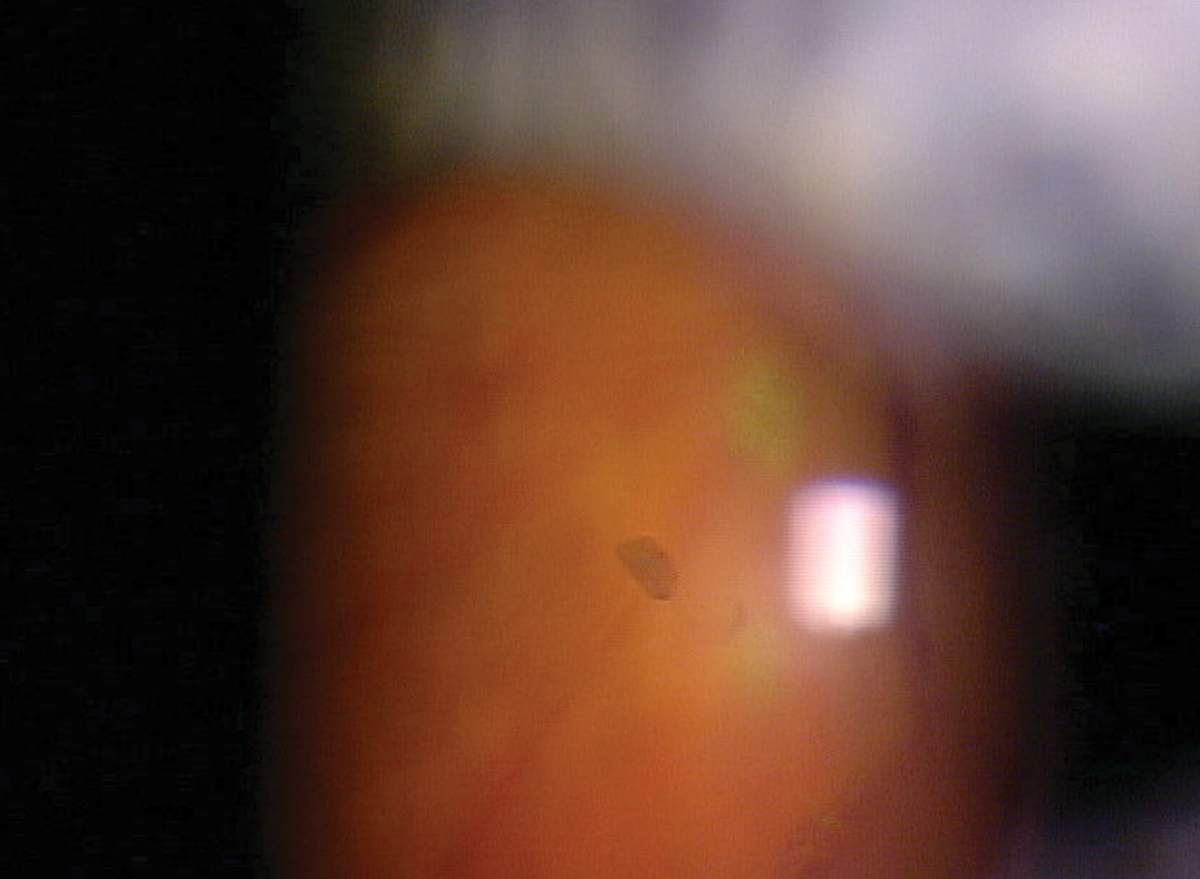Editor’s Note: As part of our “Year in Review” retrospective, we’ve selected the top 30 news stories of the year and are re-sharing them as we close out 2022. Follow along as we count down to number 1!
This story was originally published on October 7, 2022.
No. 25 biggest news story of 2022:
 |
|
Patients who present to a general emergency service with flashes and/or floaters may require further ophthalmic intervention. Photo: Nathan Lighthizer, OD. Click image to enlarge. |
Optometrists and ophthalmologists know that the visual symptoms brought on by flashes and floaters may be annoying but most often are not concerning as a matter of eye health. However, to patients these phenomena can be quite troubling, enough so to prompt emergency care visits.
Researchers recently found that patients who had flashes and floaters for less than two weeks, were 45 or older and were seen at an urgent care center were more likely to require further consultation with ophthalmology emergency services. Headache and neurological symptoms were found to be negatively associated with further consultation.
Of 6,590 primary eye-related visits to general emergency services, 687 (10.4%) involved symptoms of flashes and/or floaters. The consultation rate to ophthalmology emergency services for flashes and/or floaters was 89% (608/687). Logistic regression modeling identified symptoms ≤two weeks (OR: 8.0), age ≥45 (OR: 2.4), an urgent care center setting (OR: 2.7), headache (OR: 0.22) and neurological symptoms (OR: 0.1) as variables predictive of ophthalmology emergency service consultation. Examining the population of patients who were ≥45, had acute symptoms and lacked headache and neurological symptoms revealed that 94% (468/499) had consulted ophthalmologic emergency services.
“Patients with headache and neurologic symptoms may be more likely to have nonocular diagnoses such as migraine or stroke,” the researchers noted in their paper.
Recent invasive ophthalmologic intervention, being directed to a general emergency service by a healthcare provider, symptoms of decreased vision and symptoms of visual field defect were not predictive of referral to ophthalmology emergency services.
The mean time from triage to discharge in general emergency services for flashes and/or floaters was 2.43 hours, and the mean cost per visit was $139.11 CAD. The researchers noted that patients who consulted ophthalmology emergency services waited a total of 1,345 hours in general emergency services and accounted for $81,879.70 CAD in costs.
“In the current framework of care, patients presenting with flashes and/or floaters in general emergency service settings can contribute to service volume, consume healthcare resources and spend significant time waiting before their contact with an eyecare provider,” the researchers concluded. “Ultimately, we hope this health systems research will help inform future practice patterns when it comes to the triage of eye-related complaints by contributing to the knowledge needed to guide prospective studies on innovative care pathways appropriate for local health systems.”
Shen C, Liu A, Farrokhyar F, et al. The burden of flashes and floaters in traditional general emergency services and utilization of ophthalmology on-call consultation: a cross-sectional study. BMC Ophthalmol. 2022;22:394. |


